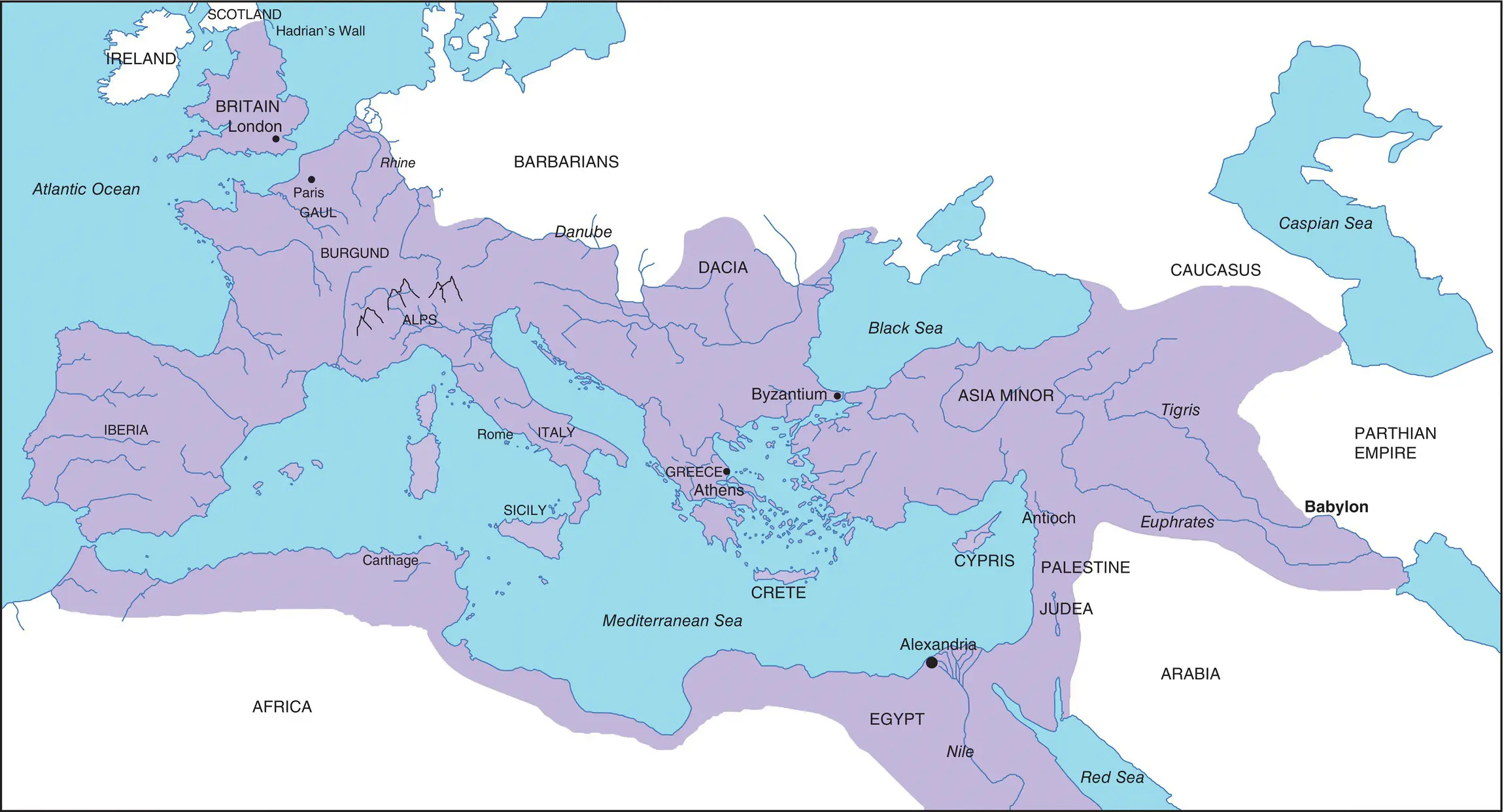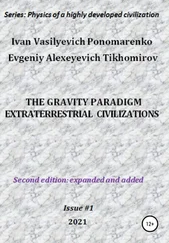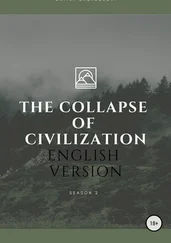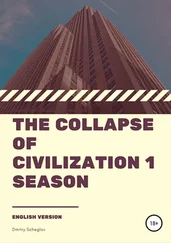The Senate was the only continuously‐existing deliberative body in government throughout Roman history. The Senate consisted of 300, later 600, members drawn mostly from the landed aristocracy. They were normally ex‐magistrates (elected officials) who served for life. The Senate was not a legislative body, but rather an advisory body that gave advice (considered binding) to the consuls and other magistrates. The Senate exercised effective control over the government during the Republican period. It controlled finances, government administration, and foreign affairs.
The population of the Republic was divided by birth into two classes, patricians and plebeians. The patricians were the landowning aristocracy who monopolized the elected offices, and who alone could interpret the unwritten laws of the Republic. The plebeians were mostly peasant farmers and shepherds, but some were merchants, tradesmen, and artisans. They were the backbone of the Roman army, but were excluded from holding public office or serving in the Senate. Kept for the most part in poverty, they were subject to being sold into slavery outside Rome by their creditors for non‐payment of debts.
Around 494 BC, the plebeians withdrew from the city to one of the nearby hills, where they set up their own assembly. The patricians were forced to recognize the plebeians' right to elect two, then later ten, magistrates called tribunes, with the power to protect plebeians by vetoing arbitrary acts by the magistrates. The tribune's person was declared sacrosanct. Any person who harmed a tribune could be put to death without trial. Eventually, the tribunes could veto any act of any magistrate (including other tribunes) or any measure passed by the Senate or other assemblies.
The struggle by the plebeians for political, legal, and social equality with the patricians continued for roughly two centuries. In 450 BC, the laws of Rome were codified and published on wooden tablets (or tables) known as the Law of the Twelve Tables. Five years later, plebeians won the right to marry patricians. By 409 BC, elected offices were open to plebeians. Beginning in 342 BC, one of the two consuls was a plebeian. The “Struggle of the Orders,” as this early civil rights struggle is often called, culminated in 287 BC with the passage of a law that made decisions of the Plebeian Assembly ( concilium plebis ) binding on all Romans.
Having achieved legal equality with the patricians, the plebeians did not go on to establish a democracy. Instead, they allowed the Senate to continue to rule Rome. A new class struggle appeared, one of rich patricians and plebeians versus poor patricians and plebeians, while the government remained in the hands of a wealthy aristocracy. Evidence of this is found in the fact that between 233 and 133 BC, 26 families provided 80% of the consuls. The same families that monopolized the consulships also controlled the Senate.
Early Conquest Under the Republic
The early Roman army was conscripted for each campaign. The backbone of the army was the infantry, drawn from the small farmers. The wealthy citizens provided the cavalry, while the poor served as light armed infantry troops. The “citizen soldiers” soon proved themselves to be the best army the world had yet seen. In c. 396 BC, the Romans crossed the Tiber River and destroyed the Etruscan stronghold of Veii. Victorious over the Etruscans, the Romans soon suffered a major defeat at the hands of the invading Gauls (Celts) from the north. The Gauls captured and sacked the city of Rome in 390 BC. No enemy army penetrated the walls of Rome for the next 800 years.
During the fourth and early third centuries BC, Roman armies defeated the Etruscans, the Gauls, and another neighboring tribe, the Samites. By 265 BC, Rome controlled all of Italy south of the Po River. Even the Greek city‐states in Sicily acknowledged Roman authority. Roman presence in Sicily set the stage for the decisive showdown between Rome and Carthage on the northern coast of Africa. Carthage originated as a Phoenician colony on the Mediterranean coast of Africa. By the beginning of the third century BC, it dominated the western Mediterranean Sea, including the western side of Sicily. At first the Carthaginians, whose navy controlled the seas, appeared to be the more formidable foe. But after a series of three wars known as the Punic Wars, between 264 and 146 BC, Carthage was utterly destroyed and Rome was master of the western Mediterranean world.
Rome entered the First Punic War (264–241 BC) against Carthage, a naval power, without a navy. The Romans built a navy and in 241 BC won a decisive victory in a naval battle off the coast of Sicily. In addition to paying a huge indemnity in silver, Carthage surrendered the island of Sicily. Rome added the islands of Corsica and Sardinia to its emerging empire in 238 BC. With the annexation of Sicily, Corsica, and Sardinia, Rome became a major power in the western Mediterranean Sea.

Figure 3.1Map of the Roman Empire, AD 117.
The Second Punic War (218–202 BC) broke out when Carthage attacked the city of Saguntum, a Roman ally in Spain. The Carthaginian general, Hannibal (247–183 BC), invaded Italy by taking a largely mercenary army across the Alps into the Po valley. Though he won a number of impressive victories against the Romans in Italy, he was never strong enough to attack Rome itself. The Romans took the war to North Africa in 204 BC with an army under the command of Publius Cornelius Scipio (236–183 BC), later know as Scipio Africanus. Hannibal returned home to defend Carthage, only to suffer defeat by Scipio at the battle of Zama in 202 BC. Carthage was defeated and forced to surrender Spain, pay a huge indemnity, and disarm.
The Third Punic War (149–146 BC) was more a massacre than a war. Roman hatred of Carthage was fueled by Carthage's growing commercial prosperity. In 150 BC, the Romans seized upon a minor incident to demand that the Carthaginians abandon Carthage and move 10 miles inland. When they refused, the Romans declared war and laid siege to the city. Carthage finally fell in 146 BC after a three‐year siege. The Romans sacked and burned the city. Those citizens who survived were sold into slavery. Scipio ordered the city totally destroyed, leaving not one stone on top of another, and decreed that no city should ever exist, or crop ever grow again on the site of Carthage. 2 Rome was now the foremost military power in the western Mediterranean. Soon its attention turned to the Hellenistic east.
Roman Expansion in the East
Roman victory in the Punic Wars did not make Rome an empire. Some historians suggest that the Roman Republic reluctantly became an empire. There was no plan of conquest. The Romans tried to avoid involvement beyond the Italian peninsula. But Rome soon discovered that peace in the Mediterranean world was vital for Rome's survival and future prosperity. That realization compelled Rome to intervene again and again in disputes between various powers at the eastern end of the Mediterranean Sea. During the last two centuries BC, the Roman Republic became an empire ruling over the whole of the Mediterranean world.
Rome was drawn into the wars between the three successor kingdoms of Alexander the Great's empire – the Kingdom of Macedon, the Seleucid Empire, and the Ptolemaic Kingdom of Egypt. As Rome expanded, it became increasingly dependent upon Egypt for grain. Instability in the East threatened Rome's prosperity. In a series of so‐called Macedonian Wars, fought between 214 and 148 BC, Rome became master of Greece.
When the Corinthian‐led Achaean League revolted in146 BC, Rome crushed the revolt and brought Greece under Roman rule. Though Athens, Sparta, and Delphi remained nominally independent as Roman allies, Corinth was utterly destroyed, 3 and the remainder of Greece was placed under the authority of the Roman governor of Macedon. Attalus III (c. 170–133 BC), the last king of Pergamum, willed his kingdom to Rome in 133 BC. It became the Roman province of Asia in 129 BC. Only Egypt and the Seleucid kingdom remained independent, albeit at the mercy of Rome.
Читать дальше













